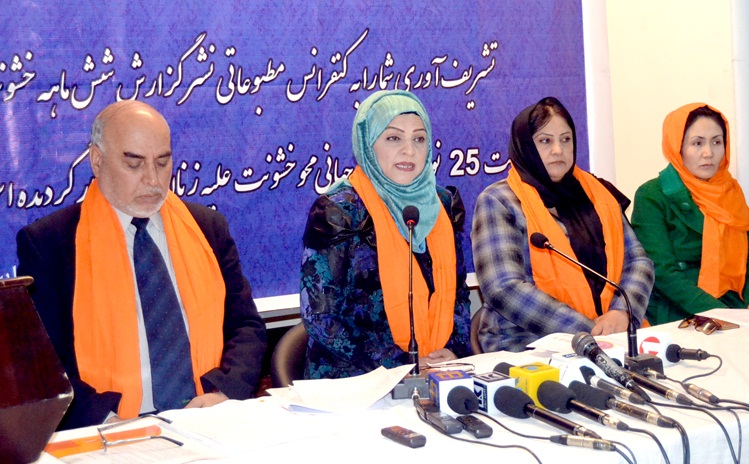By Farhad Naibkhel-KABUL: The Afghanistan Independent Human Rights Commission (AIHRC) released report on Wednesday revealing that cases of women’s killings had doubled in the past six months as compared to the same period of last year.
Commissioner for Women Support Department of the AIHRC, Qadria Yazdanparast, said that the commission documented 190 murder cases, which shows the number of killing cases have spiked significantly in the country in past six months as compared to previous year’s same period.
Speaking at a press conference she said that suicide and self-immolation cases were not included in the category of murder cases. “Perpetrators of 51 murder cases were arrested and the remaining 139 [73 percent] are on the run. The commission did not record the mentioned cases but it was documented by supporting and expanding women’s rights section.”
The report’s findings showed that 190 murder cases, including 101 honor killing and 89 intentionally by armed groups, document in the past six months of the current year. Last year in the same period, 81 cases were reported. The AIHRC recorded 2,579 violence cases, which demonstrates 7.39 percent increase as compared to the same period of 2014, added Yazdanparast.
In charge of the commission’s press office Dr. Rafiullah Bedar termed insecurity, poor law enforcement, lack of awareness and existence of illegal armed group main factors behind cases of violence against women in the country.
The AIHRC recorded 731 cases (28.34 percent) of physical violence, 183 cases (7.10 percent) of rape, 900 cases (34.90 percent) of verbal and mental violence, 550 cases (21.33 percent) of economical violence and 215 (8.34 percent) cases of other types of violence.
The report listed murder as “shudder violence” and physical violence as “brutal cases” in the country.
According to the report out of 2,579 violence cases, victims in 1,451 cases received legal support of the AIHRC. At least 338 cases of violence was resolved through mediation; 143 cases were prosecuted; 33 cases were introduced to supportive centers; 205 cases were formally submitted to legislative organs; and 133 resolved through different ways.
The report said that assessment showed that access to justice is at low level for women in remote areas and it is one of the factors behind violence against women.
The report also termed lack of serious prosecution of criminals, impunity culture, corruption, misuse of authority, interference of influential figures in cases resolution, presence of illegal armed group, insecurity, discrimination, illiteracy, old taboos and poverty main factors behind violence against women in the country.
In order to cope with violence against women, the AIHRC recommended to the government to increase awareness among public regarding women’s rights through schools, mosques and ministries of Higher Education, Justice and Woman Affairs. Create job opportunities for women at the objective to empower them economically, increase women’s role in decision making, establish programs to fight old taboos, hire qualified people in judiciary to fight the impunity culture, approve law of prohibition of violence against women, increase awareness among women and create facilities for women to access justice in the capital city and provinces.
 Afghanistan Times
Afghanistan Times




